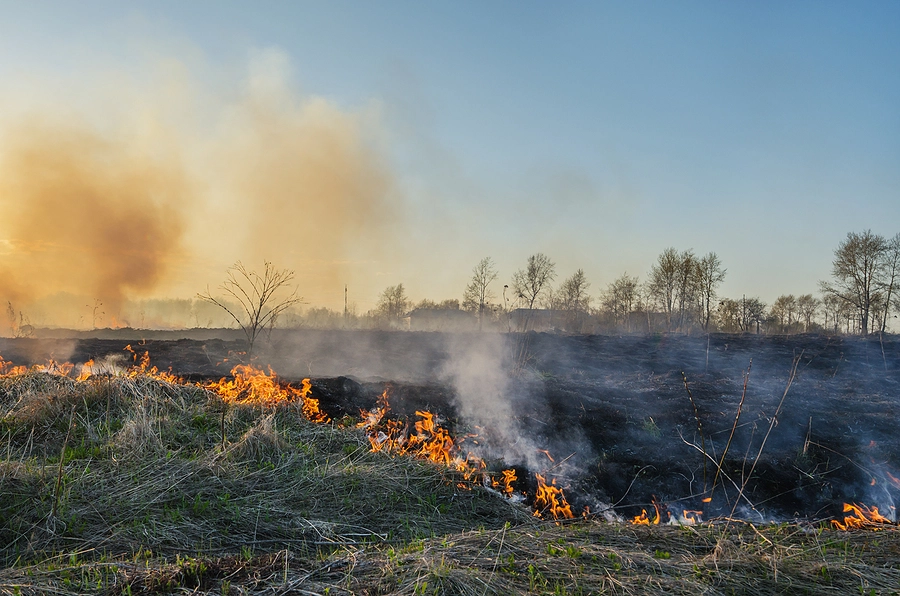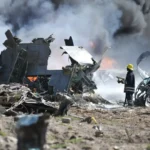Veterans who participate in the VA burn pit registry can gain access to information about possible health effects of exposure while providing the VA with the data it needs to serve vets with service-related conditions.
Summary
- The VA’s Airborne Hazards and Open Burn Pit Registry collects data on health risks from toxic exposures. This helps veterans and researchers understand and address service-related conditions.
- The registry targets Gulf War veterans and veterans of post-9/11 conflict in Southwest Asia are eligible to sign up, particularly those exposed to burn pits and other hazardous materials.
- Veterans can join the burn pit registry by completing a health survey and optionally undergoing a free medical exam.
- The burn pit registry offers veterans insights into potential health risks, aids in the early detection of related conditions, and provides documentation that can support VA disability claims.
- VetLaw assists veterans in appealing toxic exposure claims to help secure VA disability benefits.
With the Airborne Hazards and Open Burn Pit Registry, the VA aims to glean valuable information on the health risks associated with serving in areas where toxic exposure occurred.
This optional health inquiry is focused on Gulf War veterans, as well as veterans of post-9/11 conflicts in Southwest Asia. At VetLaw, we believe that veterans deserve a fair chance of securing VA disability benefits for toxic exposure claims.
Our team of capable VA disability appeals attorneys will leverage our knowledge to help you establish eligibility for your service-related condition. Schedule a free consultation with us by calling (855) 573-1503 or submitting a contact form.
Background and Components of the VA Open Burn Pit Registry
As veterans returned from deployments during the Gulf War, many reported similar types of respiratory illnesses and cancers they believed were connected to their military service. Emerging evidence suggested that open-air burn pits, which generated smoke tainted with toxins, were the culprits.
By 2014, the VA recognized the need for a more comprehensive tracking system. The VA established the Airborne Hazards and Open Burn Pit Registry to learn more about the long-term health consequences of serving in areas where toxic exposure was likely.
Veterans who qualify can join the registry, which is composed of two parts:
Detailed health survey: This consists of questions about pre-existing health conditions and symptoms that arose during or after military service. Additionally, it asks veterans about where they served, the length of their deployments, and their habits (i.e. exercise, smoking).
Voluntary medical exam: Veterans can also choose to submit to a medical assessment with a VA healthcare provider or VA-approved contractor. The provider may conduct the assessment in person or via a telehealth meeting. It is free of charge. Note that this is not the same thing as a Compensation and Pension exam.
Burn Pit Registry Eligibility Requirements for Veterans
To be able to draw reliable conclusions from Airborne Hazards and Open Burn Pit Registry (AHOBPR) data, the VA has established certain parameters on who should join. The registry primarily targets veterans who served in Operation Desert Storm/Desert Shield, New Dawn, or Iraqi Freedom/Enduring Freedom.
If you fit into one or more of the following categories, you meet the criteria to join the VA burn pit registry:
- You served in Afghanistan, Djibouti, Syria, or Uzbekistan after September 11, 2001
- You served in the Southwest Asia theater of operations or Egypt after August 2, 1990
The VA has identified these as locations where open-air burn pits potentially exposed military personnel to harmful environmental toxins. Note that the VA also recognizes other sources of toxic exposure, such as Agent Orange; the burn pit registry is focused on more recent events.
Here’s what you don’t need to prove you have in order to sign up for the VA burn pit registry:
- Current symptoms of an illness connected to toxic burn pit exposure
- Direct exposure to toxic particulate matter
- An active VA disability claim for benefits
The Purpose of the VA Burn Pit Registry
The VA burn pit registry is a resource for both veterans and VA researchers. The purpose of the Airborne Hazards and Open Burn Pit Registry is twofold:
1) It allows the VA to gather data about the health effects of being exposed to open-air burn pits, toxic particulate matter, and other hazardous materials.
By cultivating a sizable data set, the VA can pinpoint connections between toxic exposure sites and specific illnesses and injuries. If the VA finds sufficient evidence of a causal relationship, it can start the process of adding a presumptive condition. This alleviates the burden on the veteran to establish a service connection.
With a presumptive condition disability claim, the VA has already agreed that military personnel who served under those conditions and developed that medical issue have a service connection. The VA continues to add presumptive conditions for burn pit exposure, most recently including sinusitis, rhinitis, and asthma.
2) It provides a source of information for veterans who are concerned about the effects of toxic burn pit exposure.
Veterans can also reference the VA burn pit registry to look for health conditions they may be more susceptible to. If they know that they are at an elevated risk for a specific kind of cancer or respiratory condition, they have a better chance of catching it at an earlier stage, which usually means better treatment options.
Additionally, veterans can repurpose the information they documented for the registry and the findings from their voluntary medical assessment. Veterans can submit this information as evidence when pursuing a VA disability claim.
Discuss Your Burn Pit Toxic Exposure Claim With VetLaw for Personalized Case Advice
When grappling with a serious health issue like lymphoma, the last thing you need is to be stressed about appealing a VA denial. Let VetLaw chase down old records, collect medical documents, request statements, and compile evidence into a convincing appeal for VA disability benefits.
We are currently working with veterans to appeal toxic exposure disability claims, including PACT Act claims, so they can secure the financial support they deserve. Our team offers the degree of specialization you need to successfully pursue a veterans disability claim.
Schedule a free consultation with us by calling (855) 573-1503 or submitting a contact form.
Frequently Asked Questions
What did the military use burn pits for?
The U.S. military used open-air burn pits to effectively, conveniently, and affordably dispose of an array of waste products in locations across Southwest Asia. The burn pits destroyed trash, medical waste, chemicals, excess materials, and other debris.
Do I have to register for the Airborne Hazards and Open Burn Pit Registry before filing a VA disability claim?
No, you are not obligated to join the VA burn pit registry to be eligible for VA disability benefits. In fact, you are not required to participate in the veterans toxic burn pit registry at all. However, joining the open burn pit registry can potentially offer insight into the source of your health concerns.
Additionally, if you know that other veterans who served in the same location as you have developed certain medical issues, you and your healthcare provider can proactively monitor you for any symptoms.
If the VA lets me join the burn pit registry, do I have a guaranteed VA disability claim?
No, the VA does not automatically approve veterans disability claims based on participation in the burn pit registry. To qualify for VA disability benefits via a guaranteed VA disability claim, you would need to do more than state that you served in a location and during a time when the military was using burn pits.
In addition to providing proof that you served in an affected area, you would also need to submit documentation of a medical diagnosis for a presumptive condition in order to have a guaranteed VA disability claim.







